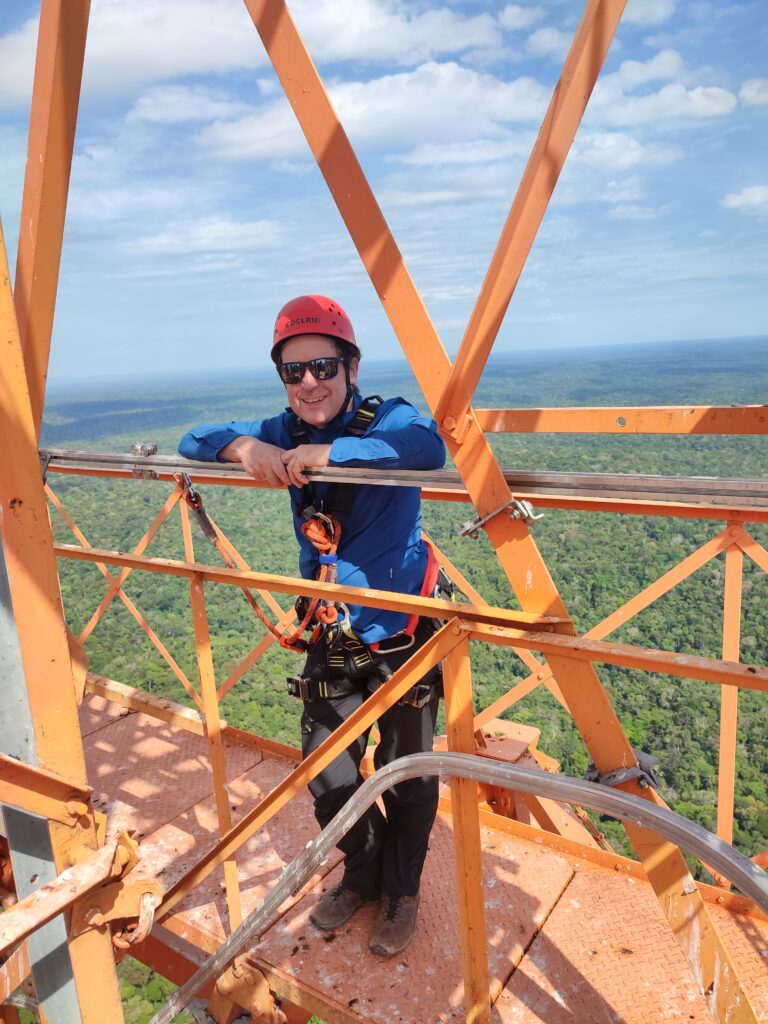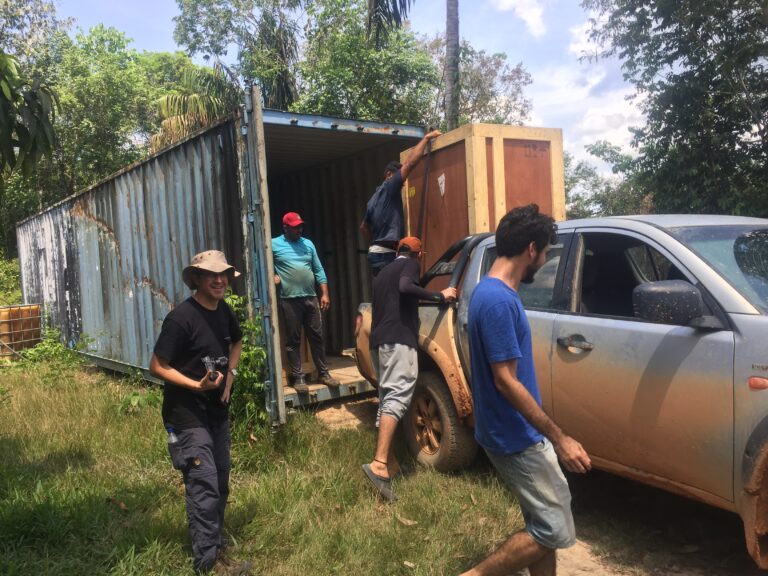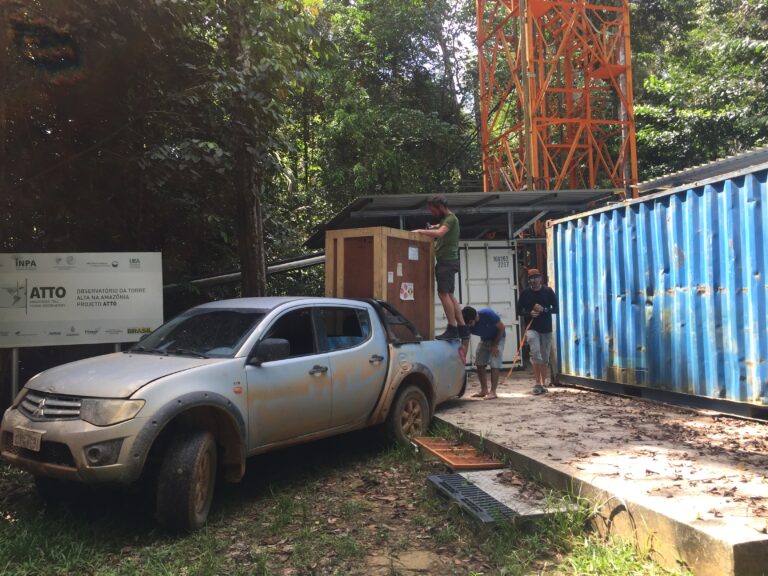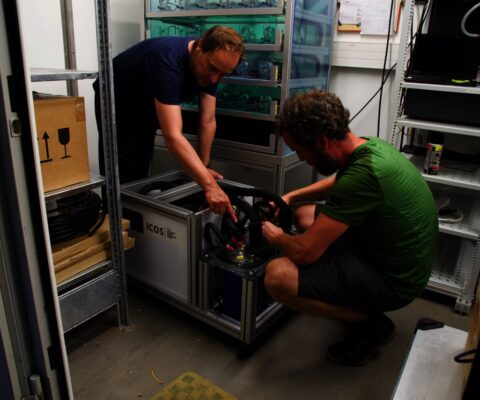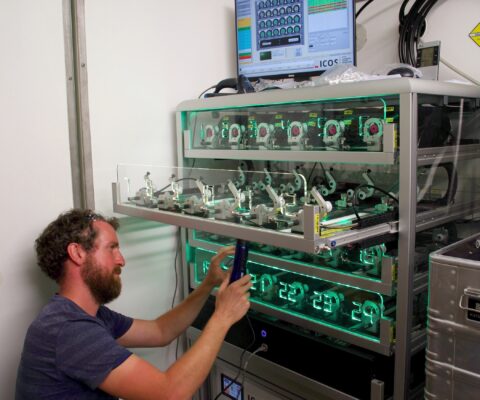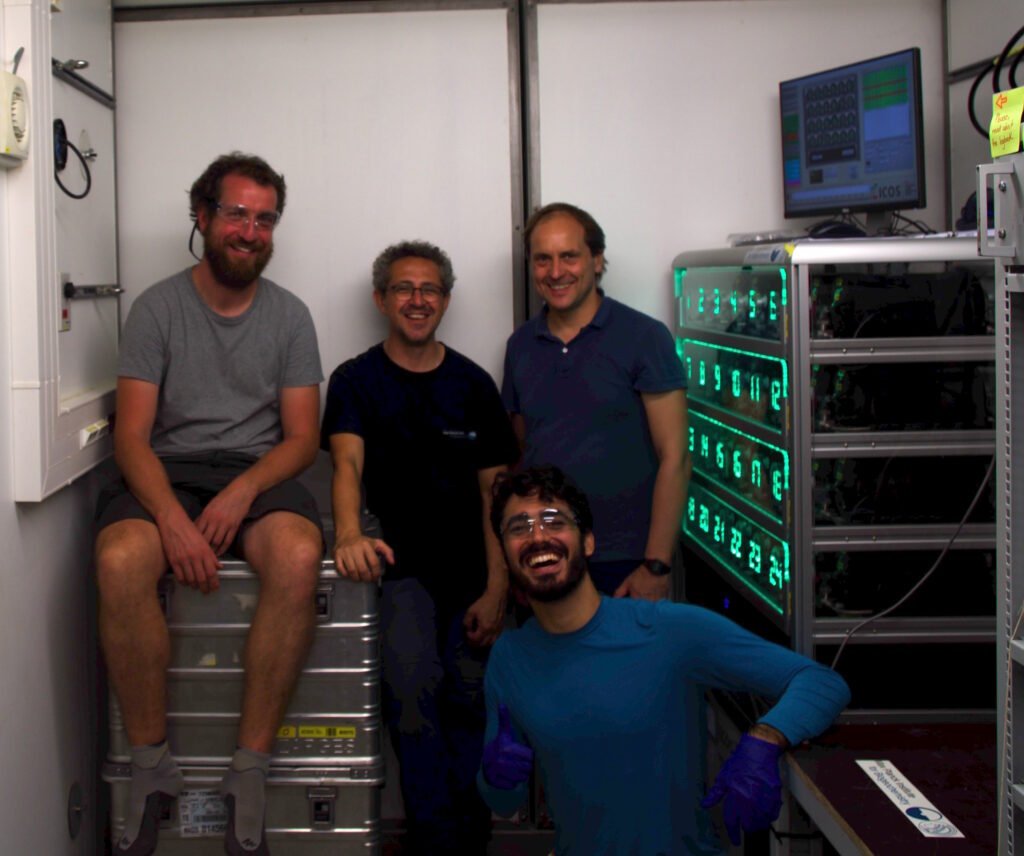Sampling greenhouse gases
The Amazon rainforest has an enormous turnover of greenhouse gases. The only way to find out how this turnover will develop over time is to measure it regularly. Therefore, my colleagues and I recently installed a flask sampler set-up to automatically collect air samples to establish a time series of greenhouse gas measurements at ATTO.
My name is Markus Eritt, I am a laboratory head at the ICOS Central Analytical Laboratory in Jena, which is located at the MPI-BGC. The ICOS network is a European research infrastructure to provide harmonized high precision data on carbon cycle and greenhouse gas budgets in Europe. The MPI-BGC, on the other hand, operates measuring stations at places with lacking measurement data around the world. While ATTO is not part of the ICOS network, we were asked to help with this project.
Charles Keeling started the first regular systematic air CO2 measurements in 1958 on Mauna Loa, Hawaii, today known as the “Keeling-curve”. He collected air samples by opening previously evacuated glass vessels and taking them back to the laboratory, where he measured the CO2 content. Today, much more sophisticated methods are available to us. With the help of tall towers such as ATTO, we can sample the atmosphere and measure greenhouse gas concentrations continuously above the atmospheric boundary layer.
The value of discrete air samples is that they are an independent method for quality control of the in-situ measurements. In addition, there are some instruments we cannot install on a tall tower, so these measurements need to be made in a lab. Examples are C14 isotopes in CO2 that allow identifying anthropogenic CO2, or the O2/N2 ratio that reflects very small air oxygen decrease accompanying burning of carbon. Only a few highly specialized laboratories in the world achieve the accuracy required for these measurements, and great efforts are being made to achieve the World Meteorological Organisation’s compatibility goals for the measurement scale agreement between laboratories. However, the high measuring accuracies only make sense if the air samples accurately represent the air at the point of sampling. Accordingly, high demands are placed on sampling procedures and sample containers.
Developing the flask sampler
My colleagues and I developed a flask sampler and air dryer that allow to collect air samples under highly standardized conditions to enable collection of air samples as part of the ICOS atmospheric observations. We also build them in our laboratory, since such devices are not available on the market. When we first started, we did not have a clear end-product in mind. There were just many different expectations of what such a device should be able to achieve. Of course, the flasks should open and close automatically, and the sampler should be able to communicate with all kinds of other devices. The sample air had to be dried and exchanged at constant pressure to minimize the influence of flask walls, all possible errors should be detected automatically, and so on. Finally, modelers requested that the air in the flasks should represent an average of over one hour to minimize the influence of potential disturbances and to match the time scheme of regional transport models that are used to interpret such measurement data. We started to find solutions one by one. One cannot imagine how many problems we had to solve until the devices worked smoothly. But meanwhile, there are samplers at over 20 ICOS stations. And now we installed one of them in the particularly challenging environment of ATTO.
Actually, the time had come many months ago, but due to the Corona pandemic, everything had come to a halt. We had sent the boxes with the sampling devices months ago. But it was unclear if they had already arrived at ATTO or were still temporally stored somewhere else. One week before our planned departure, we finally got word that at least the box with the air dryer had been found. It was in a container at Porto ATTO, the landing place on the way to the tower. That was reassuring, but we were still missing the main part of the equipment. Nevertheless, we boarded a plane to Brazil, hoping for the best. We were really relieved when we finally found the box with the sampler right next to the air dryer box at Porto ATTO.
The next question was how we would be able to transport the heavy boxes to the tower. Forklifts or other moving tools were not available and probably would not have been helpful either. But enough strong hands at the right time did the job, too. It is impressive how well organized everything was run, so smooth and easy under these difficult conditions. But to be safe, we removed all fragile glass parts from the boxes before starting to transport them the last kilometers on pickup trucks to the ATTO tower.
On-site testing
Based on our experience with the flask samplers at the ICOS stations, we were prepared for many potential problems during the set-up at ATTO. However, after a first inspection, we found that none of the complications we were prepared for actually occurred. All pumps, valves and motors were running, no parts were seriously broken. It seemed like we had a really robust system!
However, we encountered some other issues. The instruments had been transported and stored for months in a container that was not air-conditioned. Combined with the high humidity, this had left some traces on the equipment. Although we had actually paid attention beforehand, it was amazing how many rusty parts we then still found. In addition, we had not expected such extreme temperatures. Inside the storage container, temperatures must have been up to 60°C at some point. Some acrylic glass parts that had only limited space to expand had permanently deformed in other directions. Luckily, there was nothing we couldn’t fix or replace.
Besides testing the flask sampler, it was crucial to assure the leak tightness of the system consisting of the air dryer, sampler, and the inlet tubing from the tower. In the lab, one can find tiny leaks with instruments like helium leak testers. In the rain forest, on the other hand, we had to use simpler methods. The easiest method is to close all openings, reduce or increase the pressure and check if the pressure stays stable over time. This way one can only make a statement about the whole system. In case that there is a leak, it can become really time-consuming to find which of the many connections are to blame. To be on the safe side we had tightened all connections of the sampler and air dryer again and luckily it was leak-tight right away. The only piece that turned out to be really problematic was the lightning protection in the inlet tubing to the tower. The tubing is covered with metal on the inside to ensure the sample quality, and a short piece of non-conductive material must be installed in the line as protection in case of lightning strikes. But luckily it was only on the foot of the tower and in the end, it became leak-tight, too.
Meanwhile, back in Germany, we can now watch the flask sampler online taking air samples. It is a great feeling seeing what we achieved and we hope that it can help to produce many good results.


